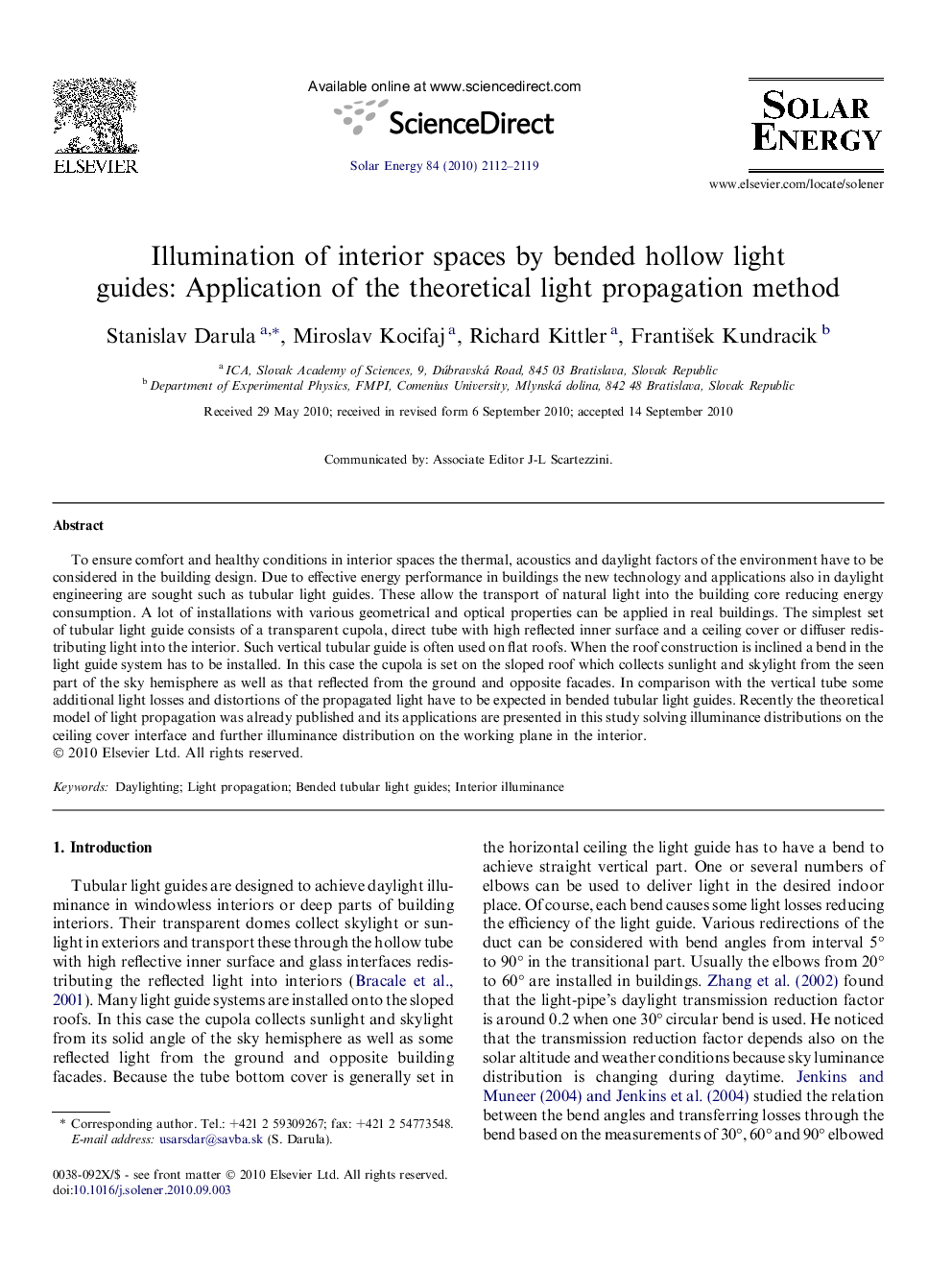| Article ID | Journal | Published Year | Pages | File Type |
|---|---|---|---|---|
| 1550972 | Solar Energy | 2010 | 8 Pages |
To ensure comfort and healthy conditions in interior spaces the thermal, acoustics and daylight factors of the environment have to be considered in the building design. Due to effective energy performance in buildings the new technology and applications also in daylight engineering are sought such as tubular light guides. These allow the transport of natural light into the building core reducing energy consumption. A lot of installations with various geometrical and optical properties can be applied in real buildings. The simplest set of tubular light guide consists of a transparent cupola, direct tube with high reflected inner surface and a ceiling cover or diffuser redistributing light into the interior. Such vertical tubular guide is often used on flat roofs. When the roof construction is inclined a bend in the light guide system has to be installed. In this case the cupola is set on the sloped roof which collects sunlight and skylight from the seen part of the sky hemisphere as well as that reflected from the ground and opposite facades. In comparison with the vertical tube some additional light losses and distortions of the propagated light have to be expected in bended tubular light guides. Recently the theoretical model of light propagation was already published and its applications are presented in this study solving illuminance distributions on the ceiling cover interface and further illuminance distribution on the working plane in the interior.
